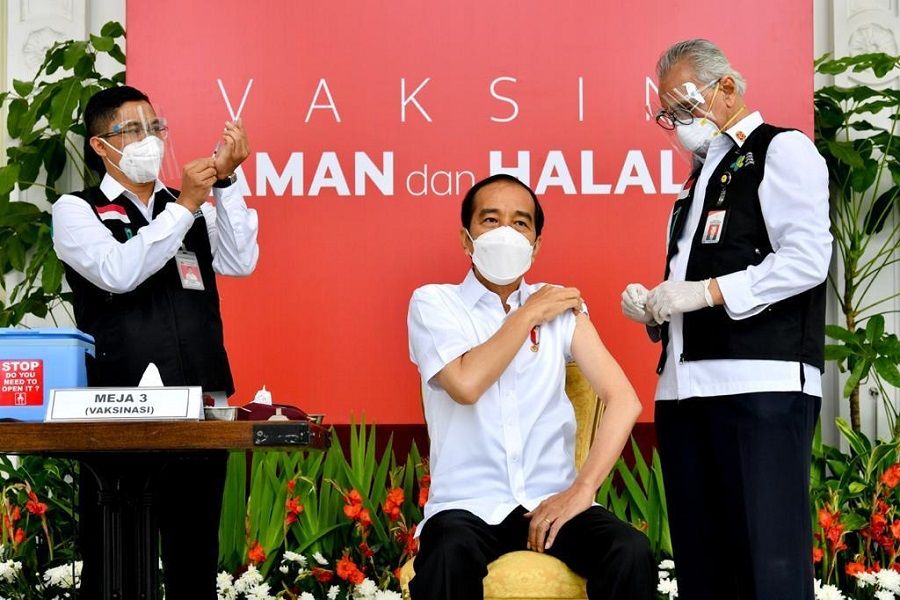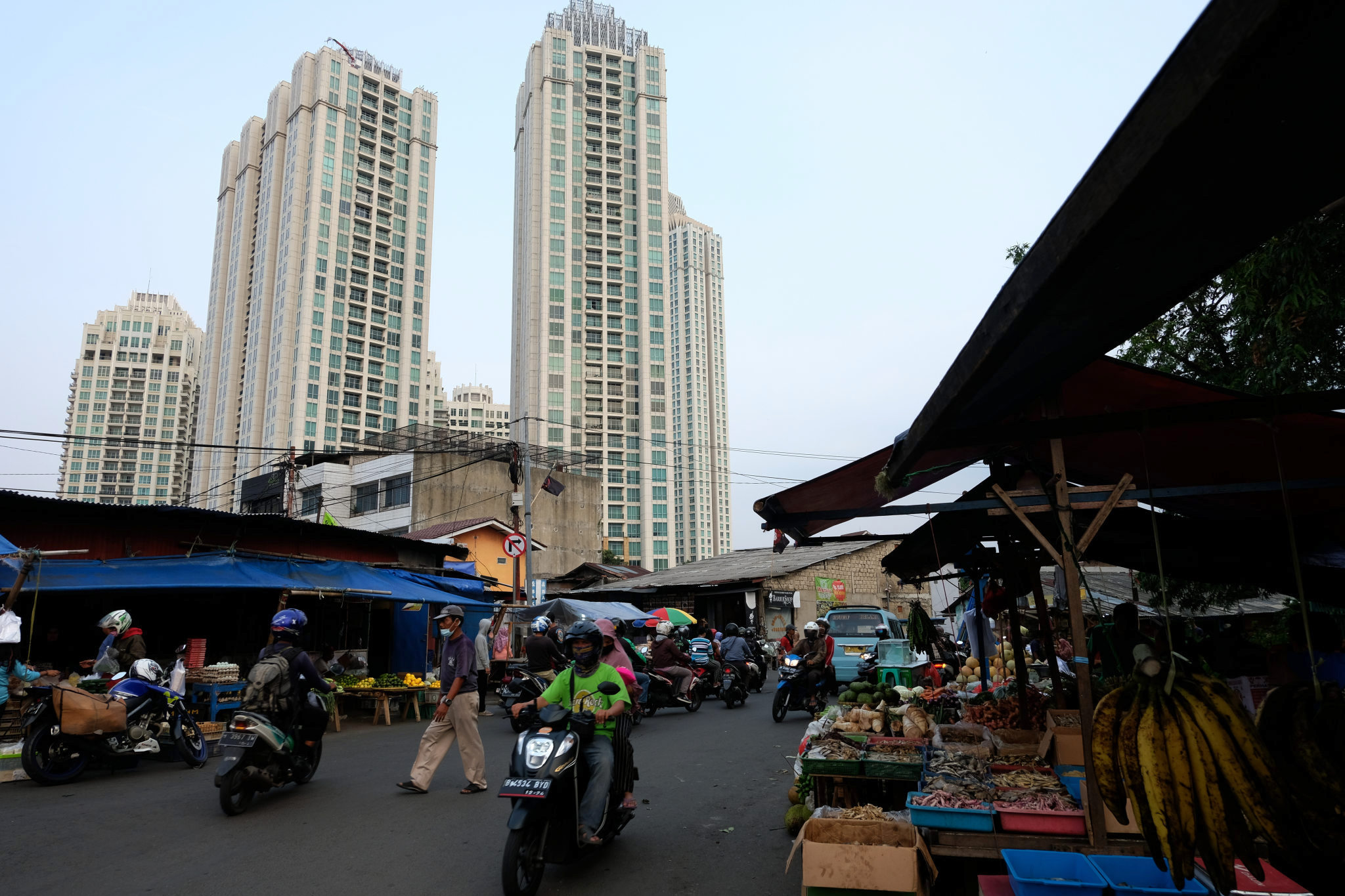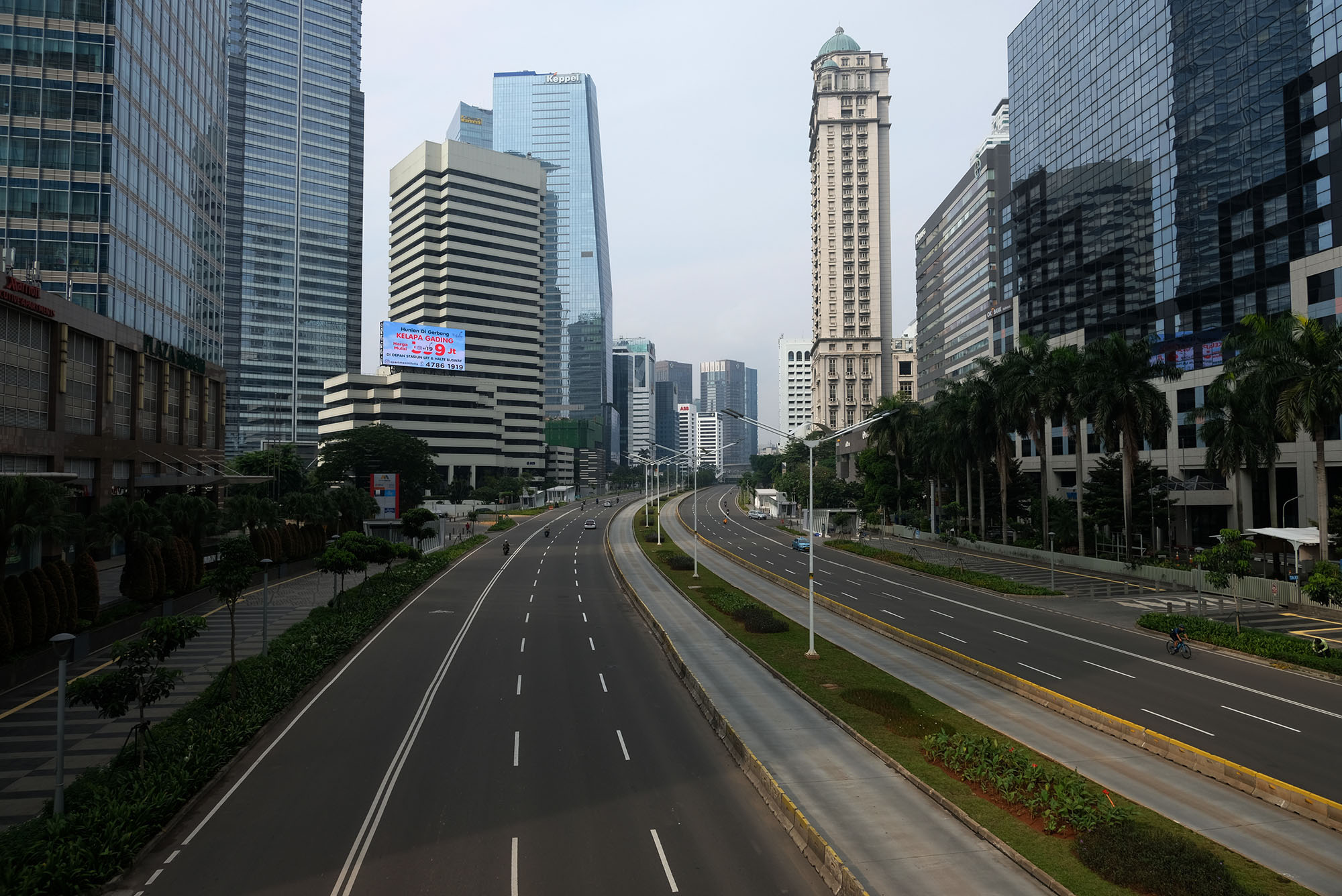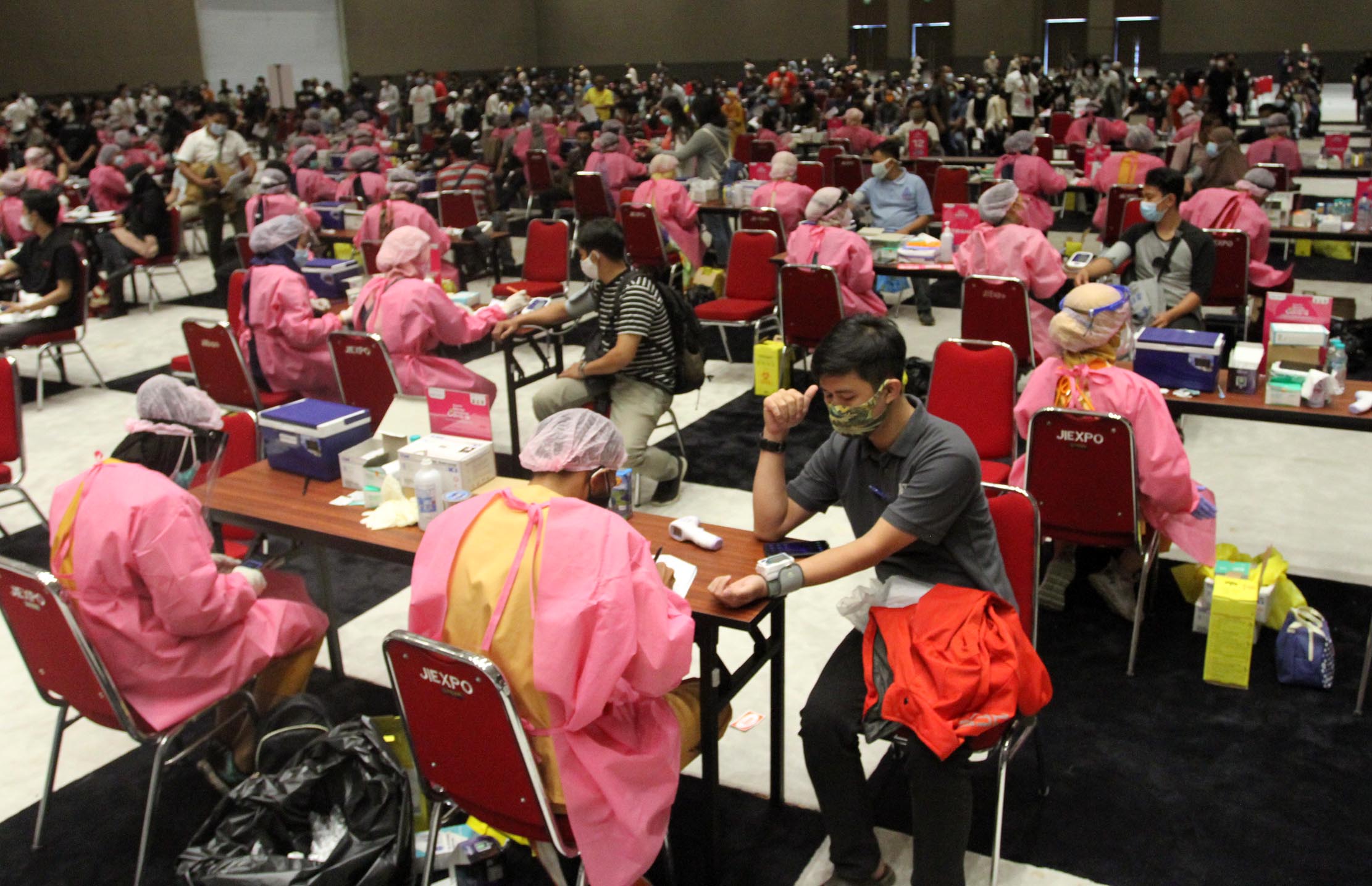
Hampering Corona Volume Two (Serial 2): Disorganized Handling by Jokowi Amid the Pandemic
Indonesia is again in turmoil due to COVID-19. The increase in post-Eid cases and the emergence of the Delta variant of the corona virus have made Indonesian health facilities again threatened with collapse.
Nasional
JAKARTA – Indonesia is again in turmoil due to COVID-19. The increase in post-Eid cases and the emergence of the Delta variant of the corona virus have made Indonesian health facilities again threatened with collapse.
In the past week, June 21-28 2021, Indonesia has even recorded a record number of new cases. First, there were 14,536 new cases of COVID-19 on June 21, 2021. This number beat the record on January 30 which was 14,518 new cases.
Since the record-breaking, Indonesia has continued to record an increase in the number of new cases. On June 23 there were 15,308 new cases, on June 24 there were 20,574 new cases, on June 26 there were 21,095 new cases, and there were 21,342 new cases on June 27.
- Perlancar Akses Tanjung Priok, Tol Dalam Kota Jakarta Seksi Kelapa Gading-Pulo Gebang Selesai Bulan Ini
- Daftar Lengkap Titik Penyekatan di Ruas Tol Jasa Marga Selama PPKM Darurat
- BPS Catat 27,54 Juta Orang Masih Hidup di Bawah Garis Kemiskinan
On Monday, June 28, 2021, there were 20,694 new cases with a total of 2,135,998 cases since COVID-19 was first recorded in Indonesia. Of these cases, 57,561 people died. This means that the fatality rate for COVID-19 in Indonesia is 2.69%.
These numbers may seem small, but this does not mean that Indonesia can be satisfied. Until now, Indonesia’s test rate per person per day has never touched 100,000. This brings the positive rate in Indonesia to 25.77%, five times higher than the World Health Organization (WHO) standard of 5%.
Even though the situation is getting worse, President Joko Widodo or who is familiarly called Jokowi is still determined to continue the implementation of Micro Community Activities (PPKM). The difference is, this time micro PPKM is tightened.
“The government has decided that Micro PPKM is still the most appropriate policy to stop the spread of COVID-19 to the village level or directly to the root of the problem, namely the community,” Jokowi said on Wednesday, June 23, 2021.
Jokowi views that the Micro PPKM policy is still the most appropriate COVID-19 control policy in the current situation because it is considered to be able to control the pandemic without killing the people’s economy.
“I convey that PPKM and lockdown have the same essence, namely limiting community activities. For that, there is no need to argue,” he said.
The tightening of micro PPKM has limited operating hours in crowded centers such as malls, stalls, cafes, restaurants, markets, street vendors, street stalls, and others to 20.00 WIB. In addition, visitors are limited to 25% of capacity. This policy is effective from 22 June-5 July 2021.
Meanwhile, office activities both ministries/agencies (K/L) and State-Owned Enterprises (BUMN) in the red zone must implement 75% work from home (WFH). While in the non-red zone 50% with strict health protocols.
Even so, various parties consider this policy not enough to limit the movement of people and the spread of COVID-19. The proof is, since PPKM was first introduced in January and changed to Micro PPKM in February it has never really drastically reduced the spread of COVID-19.
Flashback of Jokowi’s strategy to face the pandemic

Since COVID-19 first appeared in Indonesia, Jokowi has never taken the option of regional quarantine or what is more popularly called lockdown. In fact, Indonesia already has Law (UU) number 6 of 2018 concerning health quarantine which regulates this matter.
In Law 6/2018, there are four options that can be taken in the event of a public health emergency. The four options are home quarantine, hospital quarantine, regional quarantine, and large-scale social restrictions (PSBB).
At that time, many parties, including epidemiologist experts, suggested that taking the regional quarantine option could speed up in breaking the chain of spreading COVID-19 in the community. This is because the government has the authority to completely prohibit movement between regions and close the entrance from abroad.
In April last year, Jokowi decided to take the PSBB option to deal with the pandemic. In fact, the condition of the spread of COVID-19 should have met the requirements for regional quarantine because it has been declared a pandemic by WHO since March 11, 2020.
This is in accordance with article 14 paragraph (1) of Law 6/2018 which reads, “In a Public Health Emergency that is troubling the world, the central government can establish a Regional Quarantine at the entrance.”
One year later, on March 10, 2021, Executive Secretary I of the Committee for COVID-19 Handling and National Economic Recovery (KPC-PEN), Raden Pardede, just revealed that the government did not take the option of regional quarantine because the inability to finance the policy.
Indeed, Article 55 paragraph (1) of Law 6/2018 stipulates that while in regional quarantine, the basic living needs of people and food for livestock that are in the quarantine area are the responsibility of the Central Government.
“We don’t have the ability to implement a total lockdown for a long period of time, it’s not our choice, we can’t, to be honest,” said Raden in a webinar some time ago.
Middle ground

According to Raden, the government has taken the middle ground between health and livelihood or economic recovery by taking the PSBB option. This policy was taken so that the lower middle class could still find food by doing activities outside the home.
The implementation of PSBB itself was inaugurated with the issuance of Government Regulation (PP) number 21 of 2018 on April 1, 2020. It also does not apply directly because PSBB can only be carried out with the initiative of local governments seeking approval from the central government.
Since the end of PSBB, community activities have continued with various terms such as Transitional PSBB, Proportional PSBB, Java-Bali PPKM, Micro PPKM, to this day called the thickening of Micro PPKM.
- Modernland Realty Raup Marketing Sales Rp341 Miliar pada Kuartal I-2021
- Waskita Karya Raih Kontrak Pembangunan Jalan Perbatasan RI-Malaysia Rp225 Miliar
- Pengelola Hypermart (MPPA) Berpotensi Meraih Rp670,85 Miliar Lewat Private Placement
Economist at the University of Indonesia, Faisal Basri, once called the Indonesian government “sparring terms” in determining the naming of the restrictions on community activities amid the number of infections that increase every day.
“The government is again “sparring terms”: PSBB (large-scale social restrictions), transitional PSBB, micro lockdown, and finally PPKM. Is it to avoid “large scale” aimed at saving the economy?” Faisal tweeted on his Twitter account @FaisalBasri when PPKM was first announced.
When compared to other countries, the various terms to indicate the difference in tightening in Indonesia are indeed confusing. New Zealand, one of the countries that is considered successful in dealing with COVID-19, has four levels of vigilance in limiting community activities.
The four levels are level 1 – alert, level 2 – reduce, level 3 – limit, and level 4 – lockdown. These four levels have their respective risk assessments with a series of policies that are in accordance with that level of awareness.
The same thing was also done in South Korea, which has 3 levels of social distancing with different prerequisites. Grade 1 can occur if the number of cases added is below 50 with an unknown route of infection rate below 5%. Then, the status of cluster spread also needs to be reduced and at least 80% of cases are in quarantine status.
Level 2 occurs when the number of cases increases by 50-100 with the status of cluster spread slowly increasing. Finally, level 3 occurs when 100-200 new cases are recorded each day with the rate of infection routes being unknown and the spread of clusters rising high.
Demanded to re-enact large-scale social restrictions

The Mitigation Team for the Indonesian Doctors Association (PB IDI) and 5 specialist medical associations asked the central government to re-impose large-scale social restrictions (PSBB), especially in Java for at least two weeks and ensure the maximum implementation of PSBB.
The request from the largest physician association in Indonesia is not without reason. Since the number of cases increased again, the occupancy rate of isolation rooms and ICUs (bed occupancy rate/BOR) in several parts of Indonesia has been above 90%.
“At least more than 24 regencies/cities reported the occupancy of their isolation rooms above 90 percent. The BOR for ICUs from various hospitals is approaching 100 percent,” said the Head of the PB IDI Mitigation Team, dr. M. Adib Khumaidi, in a press release, Sunday, 27 June 2021.
- Gandeng Visa Indonesia, MNC Bank Luncurkan MotionVisa
- Pencarian Properti Online Meningkat 36,8 Persen Secara Tahunan, Lamudi Luncurkan #CariSekarang
- Kinerja Turun Akibat Pandemi, Kapitalisasi Pasar Modal Syariah Tembus Rp3.372 Triliun
PB IDI saw a cumulation of patients and long queues in many hospital emergency units (IGD) in big cities. In fact, there are many cases where patients die when they arrive at the ER.
The existence of PSBB can be expected to provide health facilities with breathing space. The condition of the increasing number of cases has led to limited work force, facilities, and human resources to provide services that can cause the health infrastructure in Indonesia to collapse.
This is exacerbated by the increasing number of COVID-19 cases in the environment of doctors, nurses, and other health workers, forcing them to undergo treatment or self-isolation.
In addition, there is also the threat of the Delta variant of COVID-19 which is considered by PB IDI to have the characteristics of being more easily spread, attacking all ages without the need for comorbidities, further aggravating symptoms, increasing mortality and decreasing the effectiveness of the vaccine.
The government was also asked by PB IDI to conduct more massive tests and tracking, including for children and adolescents. The positivity rate and number of tracking per 1,000 people per week in accordance with WHO standards are also requested to be used as an assessment of the performance of each regional head.
Finally, the government is asked to accelerate and ensure that vaccinations for all target populations, including children and adolescents, are achieved according to the target. The PB IDI Mitigation Team requested that vaccinations could reach more than 2 million doses per day and that vaccination service sites would be expanded.
Putting hope in vaccination

As of Monday, June 28, 2021, the Indonesian government has given the first dose of vaccination to 27,419,898 or around 27.42 million people. Meanwhile, the second dose of vaccination has only been given to 13,182,034 or around 13.18 million people. This means that Indonesia has reached 7.26% of the full vaccination target for 181,554,465 or around 181.55 million people to achieve community immunity or herd immunity.
The Ministry of Health (Kemenkes) itself already has a target to be able to vaccinate at least 1 million doses per day starting in July 2021. Ideally, this achievement can continue to increase in the following months until it can vaccinate 2 million-2.5 million doses per day.
“Based on our count, 1 million injections (of the COVID-19 vaccine) per day may not be enough. In fact, it might even have to increase to 2 million, to 2.5 million per day,” said Minister of Health, Budi Gunadi Sadikin, on Thursday, June 24, 2021.
- Cara Membuang Sampah dari Pasien COVID-19 yang Sedang Isolasi Mandiri
- Netflix Dikabarkan Berencana Perkenalkan Video Game
- Viral di Twitter Akibat Tak Sengaja Makan Babi, Ini Cara Mengetahui Makanan Mengandung Babi Agar Tak Keliru
With a target of 181.5 million people being vaccinated, this means that Indonesia needs around 363 million doses to achieve that target. Unfortunately, the number is limited because there are only five countries that are able to independently produce COVID-19 vaccines.
The limited number of vaccines makes Indonesia only able to get 75 million doses in the first semester of 2021. The remaining 290 million doses of the new vaccine will be received by Indonesia in the second semester of 2021.
“You can imagine injecting 75 million doses in the first 6 months but having to increase to 290 million doses in the next 6 months. This is a large number so that according to our count only 1 million a day is not enough,” said Budi.
As of Saturday, June 26, 2021, the Ministry of Health claims that Indonesia already has sufficient vaccine availability and logistics to vaccinate 1 million doses per day. The details are 3 million doses of Sinovac vaccine in finished form, 91.5 million doses of Sinovac vaccine in bulk form, 8.2 million doses of AstraZeneca vaccine in finished form, and 2 million doses of Sinopharm vaccine in finished form.
On the same day, Indonesia also broke the record for the first time to penetrate 1 million doses of vaccine per day. That day, Indonesia managed to provide 1.3 million doses of vaccination. Unfortunately, this achievement cannot be continued the next day with a record of re-vaccination below 1 million per day.
- Tak Cuma Corona, Penerapan 5M Juga Bisa Lawan Pinjol Ilegal
- Perluas Metode Pembayaran, XL Axiata Gandeng Perusahaan Fintech Xendit
- Booming Tren Daring (Serial 2): Mendadak Kaya Gara-Gara Ekonomi Digital
The Ministry of Health has also issued a policy that only requires ID cards for vaccinations at health facilities and central government hospitals to be able to consistently vaccinate 1 million per day. Previously, people living outside the area according to their ID cards needed to bring a domicile letter or work statement in the area to be vaccinated.
The acceleration of COVID-19 vaccination can be carried out through vaccination service posts and in collaboration with the Indonesian National Military, Indonesian Police, community organizations, the Vertical Technical Implementation Unit of the Ministry of Health such as the Port Health Office (KKP), Vertical Hospital, Health Polytechnic and the active role of the business world.
In addition, Jokowi has also announced that the Sinovac vaccine has received an emergency use permit from the Food and Drug Supervisory Agency (BPOM) to be used for children aged 12-17 years.
“The Sinovac vaccine is declared safe for use by children aged 12 to 17 years, so that vaccination for children of that age can start immediately,” said Jokowi through the Presidential Secretariat YouTube, Monday, June 28, 2021.
The increase in the population target is expected to make it easier for the government to achieve the target of 1 million vaccine doses per day until the end of July 2021. In August 2021, the target will double to 2 million vaccine doses per day. So, can the Jokowi government overcome the pandemic? (SKO)
This article is a series of special reports that will be continued in the next issue entitled “Hampering Corona Volume Two.”
1. Hampering Corona Volume Two (Serial 1): Delta Variant Attacks and Lessons from Other Countries
Writer: Reza Pahlevi
Editor: Sukirno
